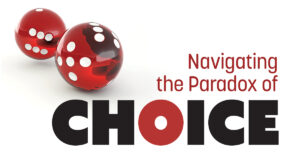As the housing market continues to see regulatory shifts and changing government priorities, downpayment assistance will play an even more important role in helping people achieve homeownership.
The need for creative, broker-delivered solutions, and particularly downpayment assistance, is becoming a strategic difference maker in the wholesale space. This is especially true now in the wake of policy changes at the government-sponsored enterprises (GSEs) Fannie Mae and Freddie Mac and the rollback of certain affordability initiatives.
While wholesale lenders may not engage directly with borrowers, they play a pivotal role in determining which loan products and tools are available to the broker channel. Empowering brokers with access to viable downpayment assistance can help extend reach, increase volume and strengthen relationships across diverse borrower segments.
Homebuyers have become more aware of downpayment assistance through real estate agents, lenders and listing sites like Zillow. In 2021, Zillow made downpayment assistance information available on its app and website. Within one year of launch, more than 1 million unique users had searched for eligibility. By January 2025, that number had grown to 5 million. This reveals both the tremendous demand for assistance among first-time buyers and the scale of the affordability challenge.
Demand, but barriers
First-time homebuyers represent a significant portion of the purchase market despite facing considerable affordability headwinds. Though challenged by a national shortage of affordable homes for sale, higher interest rates and rising prices, buyers say their biggest hurdle to homeownership is having to save for the downpayment and closing costs.
Bankrate’s 2025 Home Affordability Report found that 81% of aspiring homeowners consider downpayments and closing costs significant homeownership obstacles. Specifically, 52% described these expenses as a “very significant” barrier, while 29% viewed them as “somewhat significant.”
According to the National Association of Realtors, in 2024 with the median downpayment for first-time buyers at 9% and home prices continuing to edge higher, many otherwise qualified borrowers were struggling to enter the market.
This demonstrated a clear opportunity for wholesale lenders to offer downpayment assistance-aligned products and broker training to serve this business segment more effectively.
Downpayment assistance numbers
There were nearly 2,500 active downpayment assistance programs nationwide offered by state housing finance agencies, municipalities, nonprofits and employers at the end of 2024. These programs are available in all 3,143 U.S. counties. More than 2,000 counties offer 10 or more downpayment assistance programs. On average, these programs can offer buyers a benefit of $18,000, enough to lower their loan-to-value ratio by 6%.
Some of these programs allow funds to be used in ways other than bolstering the downpayment or closing costs. These can include allowances for prepaid expenses, buying down the mortgage interest rate and even reducing the cost of private mortgage insurance. In some cases, buyers can combine multiple programs for even greater savings. An increasing number of programs offer flexibility in the property types. Buyers, for example, can consider multifamily (1-4 units) and manufactured homes.
For wholesale lenders, building partnerships with downpayment assistance providers and integrating their services into eligible loan products becomes a scalable way to empower brokers with more tools without needing to reinvent core product lines.
When structured properly, downpayment assistance can improve loan performance and expand reach in underserved markets without increasing risk exposure. It’s a win-win for brokers and the wholesale lenders backing them.
GSE policy implications
The downpayment assistance conversation becomes even more relevant with the recent shifts in housing policy and GSE directives.
Consider these developments:
- Fannie Mae and Freddie Mac have phased out assistance programs. In March 2025, the Federal Housing Finance Agency (FHFA) announced the GSEs will end special purpose credit programs (SPCPs) under Fannie’s HomeReady and Freddie’s Home Possible. These programs provided downpayment and closing cost assistance for first-time and low-income buyers. While this may sound alarming, the effect on the market is marginal.
- Reversal of multifamily renter protections: The FHFA has rescinded the Biden-era multifamily renter protection requirements. While this may ease compliance pressure for some multifamily portfolios, it also signals a broader shift for equity-focused housing access away from direct federal support.
- Equitable housing plan waivers and compliance rollback: The indefinite waiver of GSE Equitable Housing Plan rules and the rollback of the November 2024 seller/servicer compliance bulletin are further signs of a regulatory environment tilting away from public-sector solutions. This creates a clear vacuum and a market opportunity for private lenders.
Why this matters
Without GSE-driven affordability tools in the foreground, brokers will increasingly rely on the wholesale channel to bring flexible, downpayment assistance-compatible solutions to the table. Brokers can only tap downpayment assistance if the loan programs offered by the wholesale lender is structured to accommodate it.
Wholesale lenders that partner with downpayment assistance administrators and integrate program-friendly guidelines and broker training will be better positioned to expand their broker networks, drive purchase volume and meet market penetration goals.
“In 2025, offering downpayment assistance is not just about affordability; it’s about positioning your business to lead in a new market reality.”
In 2025, offering downpayment assistance is not just about affordability; it’s about positioning your business to lead in a new market reality. Downpayment assistance has always helped level the playing field for many first-time buyers. But in today’s climate, it’s become a critical access point for any borrower priced out by rising home costs and shrinking federal support.
In the current market environment of high home prices and interest rates, wholesale lenders have a unique opportunity to equip brokers with the tools, knowledge and loan products to serve buyers who need a lower loan-to-value ratio or more cash to close. Downpayment assistance is not just a program. It’s a business strategy.
Whether through product development, underwriting flexibility or broker education, bringing downpayment assistance into the fold strengthens value across the entire third-party origination ecosystem.
Author
-

Rob Chrane is founder and CEO of Down Payment Resource and is a leader in the homeownership affordability space. A 30-year housing industry veteran, Chrane launched a comprehensive database of U.S. homebuyer assistance programs and develops tools that enable lenders, borrowers and real estate professionals to connect homebuyers with affordability programs.
View all posts








